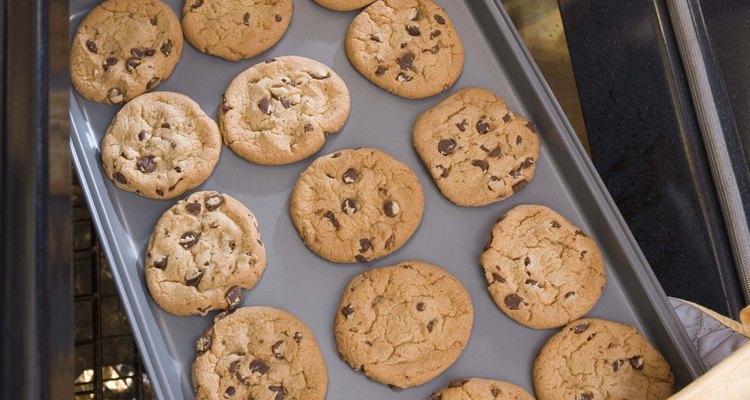
Coconut flour is a versatile substitute for grain-based flour when you are cooking for special diets. It’s generally better to use established recipes for coconut flour, since it's significantly different in structure than wheat flour. Follow a few guidelines to confidently use it in baked goods, meat dishes and even as breading for chicken and vegetables. If you’re on a low-carbohydrate diet, a gluten-free diet or you are trying to increase your family’s fiber and protein intake, coconut flour is one solution.
Substitute for Low-Carb Diets
Coconut flour is lower in net carbohydrates than grain-based flours, which means that it has fewer carbohydrates that your body can digest. Replace from 10 to 30 percent of the regular flour called for in a recipe with coconut flour when you're baking breads, cakes, cookies or dinner rolls. Generally, 1/4 cup to 1/3 cup of coconut flour can take the place of one cup of grain flour. Coconut flour is drier than other flours, however, so you will have to add more liquid and eggs to the mixing bowl to keep the end product moist and fluffy. For every cup of coconut flour you use in a recipe, you will need about 6 eggs and 1 cup of liquid, such as milk or water.
Beef Up Your Meat Recipes
Make meatloaves and meatballs gluten free by substituting coconut flour for the crackers or bread crumbs that are included in most recipes. Just substitute coconut flour at half the amount listed in the recipe. For instance, if your meatballs call for 1 cup of breadcrumbs, use 1/2 cup of coconut flour instead. As when baking, you will have to increase the amount of liquid used in the meat recipe. Unlike a cake or cookies, you can tell if your meatballs are too dry just by touch. Add extra beef broth or tomato sauce, a little at a time until you reach the right consistency.
Bread Chicken and Vegetables
Make fried chicken or tempura vegetables by substituting equal amounts of coconut flour for grain flour. Dredge the meat or vegetables in whisked egg as you normally would, and then roll it around in coconut flour. The egg will help with the flour’s moisture absorption, as will the oil you fry it in, so you don't have to add extra liquid.
Remember These Tips
When using coconut flour in your recipes, use a few tips to help make your cooking experience successful. When baking cookies, bread, cakes or a similar item, you may need to whisk the flour and wet ingredients together first. Let this mixture sit for about 15 minutes to moisten the flour so that the end product comes out moist and fluffy. Coconut flour also has a higher level of fiber than other flours. Your digestive system may not be ready for the difference, so don’t eat too much coconut flour all at once if you’re not used to consuming it.
Related Articles
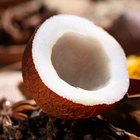
How to Cook With Coconut Flour for Main ...
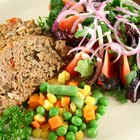
How to Plan a Meatloaf Menu
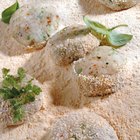
How to Make Breading Stick to Meat ...

How to Use Turkey Eggs
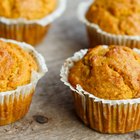
Flour Substitute for Muffins

Can You Substitute Egg Beaters for Eggs ...

How to Bake Chicken With Almond Flour
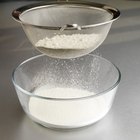
How to Substitute Cornstarch for ...

Uses for Pulp After Making Soy Milk
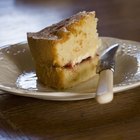
Baking With Almond, Rice & Coconut Flour
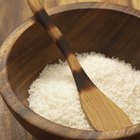
How to Cook Coconut-Crusted Tilapia ...

How to Fry Shrimp With Potato Starch
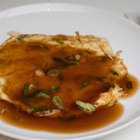
How to Make Egg Foo Yung

The Nutrition in Coconut Powder

How to Replace Eggs With Applesauce, ...
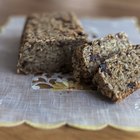
Gluten-Free Bread Without Eggs
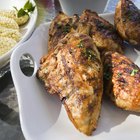
The Harcombe Diet Food List

Can I Use Rolled Oats in Place of ...

How to Store Smoothies in the Fridge

Can You Make Scones With Coconut Flour?
References
Resources
Writer Bio
Meg Winkler began professionally writing in 2008. She has covered a variety of topics including fine wine, interiors, the arts, lifestyle and history. Winkler has been a luxury publications editor and music critic. She is an independent author and holds a Master of Arts from American Military University.
Photo Credits
Jupiterimages/Comstock/Getty Images